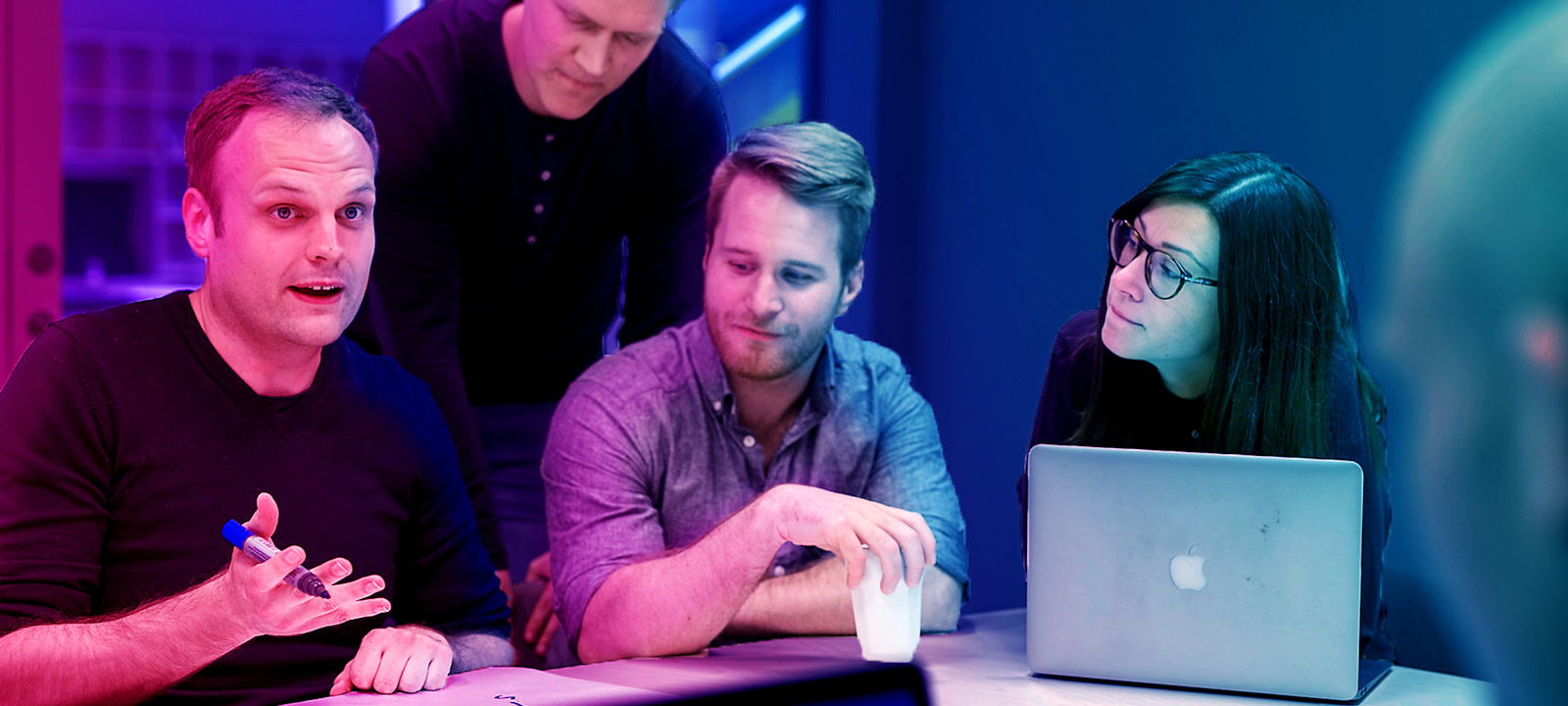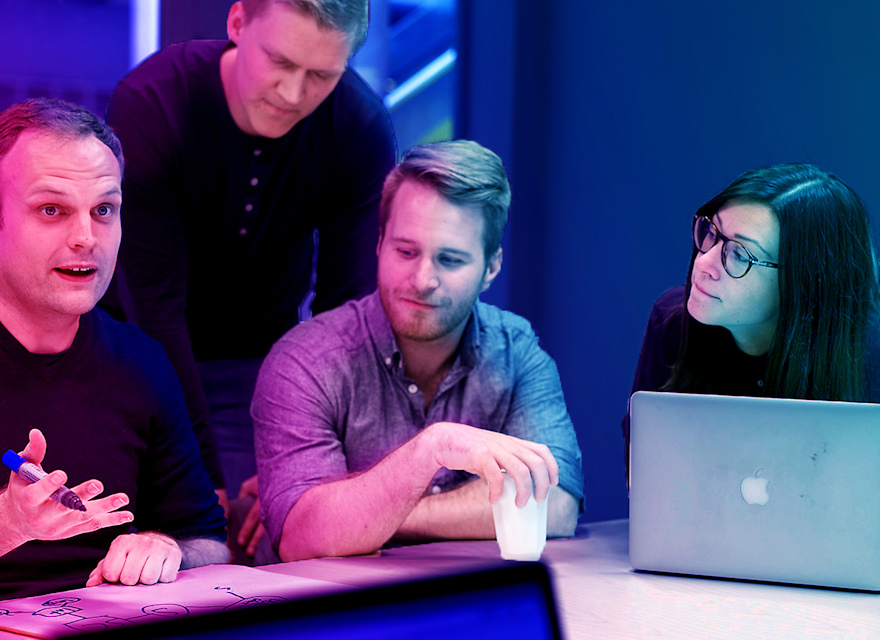Of course, businesses looked at commercial results, employee satisfaction surveys and exit interviews. Or if there was leftover budget, they would do a large-scale assessment ran by an external consultancy firm.
But one thing we’ve discovered here at Valtech is that when companies hold this perspective on an agile way of working, there’s an inevitable contradiction at play: For if change is the only constant, why then assess using snapshot methodologies? Surely, there must be a better, more structured way to do this.
Observe the Evolution
Not every organizational change needs to be as radical as a redesign, where change can happen more or less overnight and the effects observed the day after. The evolution of an organization is, in a lot of ways, more subtle, and the effects—good and bad—often times less obvious.
 To give these evolutions a certain starting point, a north star, as well as a guide on this journey, we introduced an assessment methodology that any organization can benefit from. With this methodology, we kickstart and sequentially embed a way-of-working so you can consciously move the needle when it comes to your organizational change. All made tangible across five major themes to gain a full overview of the situation.
To give these evolutions a certain starting point, a north star, as well as a guide on this journey, we introduced an assessment methodology that any organization can benefit from. With this methodology, we kickstart and sequentially embed a way-of-working so you can consciously move the needle when it comes to your organizational change. All made tangible across five major themes to gain a full overview of the situation.
Five Themes to Assess Organizational Change
Our methodology is built on the topics of leadership, capabilities, empowerment, communication and technology.
We start by looking at the capabilities and style of leadership. For example, how knowledgeable are employees and are these capabilities spread across the organization? We also question if an innovative and experimental mindset is fostered, and the necessary mandate and autonomy is given to make experimental practices a success. All of this assessment of leaderships shines a light on the question of a company’s overall capabilities and how empowered the employees are to truly innovate. The fact of the matter is it’s impossible to adopt an Agile way of working if these leadership necessities aren’t in place.
 Another factor of leadership is how an organization communicates about change, strategy and vision with its employees. We look not only at the means and methodology of communication, but also the effectiveness of communication on the employees who hear it. Lastly, the technology is assessed to see whether it facilitates efficiency, effectiveness and openness.
Another factor of leadership is how an organization communicates about change, strategy and vision with its employees. We look not only at the means and methodology of communication, but also the effectiveness of communication on the employees who hear it. Lastly, the technology is assessed to see whether it facilitates efficiency, effectiveness and openness.
Because we split this assessment between management and general employees, we also get insights into the gaps between the different layers of an organization.
This outline is forged into a lean and pragmatic approach: with desk, quantitative (questionnaire) and qualitative (interviews) research, culminating in a strong understanding of the aforementioned five foundational topics. These observations are distilled in a maturity model and management summary that gives a good understanding of the current situation and attention points. In order to determine the best path forward to achieve the desired shift to an Agile mindset, an in-depth report of the insights is also created for reference.
Transforming a Dutch Health Insurance Company
A large health insurance company in the Netherlands was struggling with their technology stack: a lot of tailor-made adaptions had made it difficult to work with, and the knowledge of the chosen technology was, for the most part, in the hands of contractors. The initial request to “assess and fix the technology stack” quickly led to us discovering that the problems with the tech stack were merely a symptom of an organizational challenge.
Our assessment method uncovered various points of attention, ranging from the overall lack of resources to a lack of mandate and innovation power. For example, only 40% of employees felt the support and trust from their management, whereas 100% of management said they empower their employees. Same goes for the choice of technology, where only 35% of employees felt that the technology supported them in doing their job effectively and efficiently, whereas 83% of management believed they made a right choice of technology.
 As a result, while the assessment validated the assumption that the technology needs adapting, initiatives were formulated around other topics as well that, in the bigger context, would make the organization more effective. The three themes that were identified as high priority were resources (amount of FTE and their capabilities), innovation power (processes and mandate), as well as communication (involve employees and communicate regularly). A positive effect was also that employees felt valued.
As a result, while the assessment validated the assumption that the technology needs adapting, initiatives were formulated around other topics as well that, in the bigger context, would make the organization more effective. The three themes that were identified as high priority were resources (amount of FTE and their capabilities), innovation power (processes and mandate), as well as communication (involve employees and communicate regularly). A positive effect was also that employees felt valued.
Additionally, this assessment now functions as a zero measurement of how the organization is doing. Actions taken to improve this situation can be measured structurally by repeating this exercise on a smaller scale.
New Year, New Opportunities
The past year has changed the dynamics of organizations, yours included. Whether it is the way your workforce collaborates remotely, the products you make, or even how your customers engage with you. Now that the dust is slowly settling after 2020 stirred it up, the start of 2021 offers a great start to reassess these changes to your organization and create a zero measurement.
 The insights uncovered from such an assessment give input and direction with regards to your plans for not only this, but also the upcoming years. Whether it is shifting budgets to employee empowerment programs or investing in your technology stack. The short-term benefits are engaging your employees and listening to their input, whilst the long-term benefits are about making your organization more agile and resilient to external influences that radically affect the way you do business.
The insights uncovered from such an assessment give input and direction with regards to your plans for not only this, but also the upcoming years. Whether it is shifting budgets to employee empowerment programs or investing in your technology stack. The short-term benefits are engaging your employees and listening to their input, whilst the long-term benefits are about making your organization more agile and resilient to external influences that radically affect the way you do business.
Want to take the first step in performing such an assessment? Feel free to reach out and we will support you in getting started.






